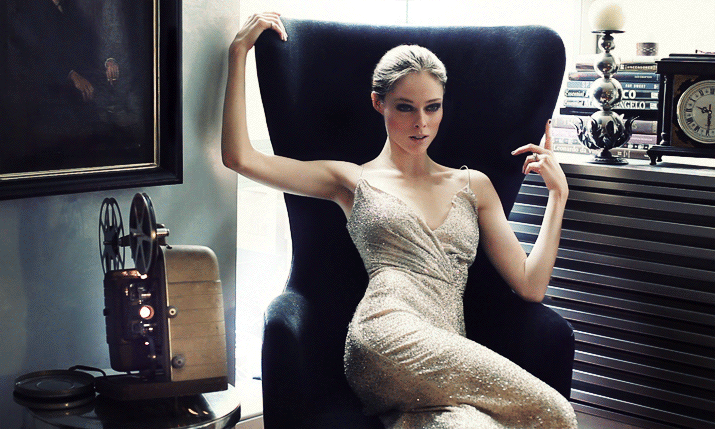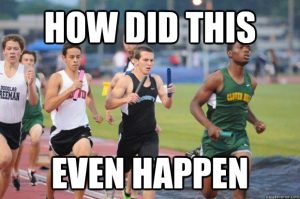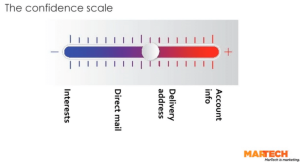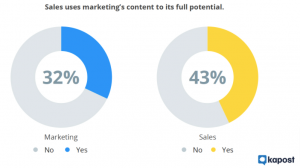If you’ve seen any of the Harry Potter movies, then you’ve seen a cinemagraph. Remember the newspaper photographs that whimsically came to life right off the page?
Luckily, you don’t have to be a full-blooded wizard to include this eye-catching format in your content marketing strategy – we muggles can create this effect in the form of digital cinemagraphs.

As a video production designer and animator, creating beautiful content is my goal, and cinemagraphs take the cake for achieving that “oooh, ahhh” reaction from audiences. They behave technically like photographs on a webpage, yet draw more attention (and ultimately, user engagement) with their trademark movement.
I first dabbled with this format by creating several cinemagraph portraits for my colleagues in an old Western theme. They pack way more personality and interest than your everyday corporate name tag photos, right?



Cinem-whaaa?
A cinemagraph is, in essence, a living photograph. More accurately, cinemagraphs are high-quality GIF files, meaning they can be embedded anywhere on a page without needing a video player while still playing in a seamless loop.
Unlike their more common animated GIF cousins, however, the movement in a cinemagraph is subtle. This makes cinemagraphs ideal for final-product beauty shots, creative portraits, recipes and slideshows.
Take Tyra Banks as an example: She replaced all still photos with cinemagraphs in season 20 of America’s Next Top Model.

Components of a Successful Cinemagraph
To create a successful cinemagraph, you should envision a still photograph coming to life. This means you need rich, still elements frozen alongside the animated moving part. In other words, if a singular moveable element is surrounded by a stagnant background, the effect is lost.
Above all, subtlety is key. If there is too much movement, you may as well use a video file or animated GIF. What you want in a cinemagraph is unexpected movement that may require a double take to notice.
Also, you want your cinemagraph to loop seamlessly. This means looking for movement in an image that will seem organic and continuous. Pro tip: Some movements can be duplicated and reversed during the editing process as an effective way to create a seamless loop.

Production and Budget
The production requirements of cinemagraphs are similar to that of a video or photo shoot, in that cost will vary drastically based on individual project needs. You can use anything from cinemagraph-making mobile apps like Flixel and Cinemagram to fully-crewed productions.
For professional shoots (which can yield more than one cinemagraph to make it cost-effective), you should plan location, a DP or photographer, model(s), on-camera talent and a photo editor. The main cost-drivers here are the size of the crew, complexity of the subject matter, location and volume.
Here are a few production scenarios in order from most expensive to least:
- Custom Stand-Alone Cinemagraphs: One-off cinemagraphs will have a much higher per-unit cost, much like a video pilot episode. However, the production value will be at its highest, since every detail is custom tailored to the single cinemagraph.
- Cinemagraph Series: Producing a series of related cinemagraphs in a single location will greatly reduce the per-unit cost, similar to a video or photo series. This is a great option for images that tell a story or a collection of recipes.
- Companion-Content Cinemagraphs: The most economical option is to tack cinemagraphs on to a video or photo shoot, maximizing the use of location, crew and equipment costs, while increasing your content output. As mentioned above, cinemagraphs make great final product shots, so it’s cost and time effective to shoot cinemagraph footage while filming other videos.

Creative Direction
Since cinemagraphs have risen in popularity, I’ve seen some truly inspirational images, as well as some major fails. Here are a few tips to keep in mind when integrating cinemagraphs into your content offerings.
Make it look like a photograph. Use classic photography principles, such as depth of field and the rule of thirds, to drive home the “living photograph” effect.
Play with reflections. Try animating what appears in reflective surfaces. This adds a whimsical touch, a la Through the Looking Glass.
Be careful with animating body parts. It’s tricky to isolate a body part without making it seem dismembered. Practice subtlety and stick with tiny movements.

Experiment with magic. Don’t be afraid to inject some Harry Potter magic into your cinemagraph images. After all, it is a sense of wonder that draws viewers into a cinemagraph – and keeps them coming back to your content.
(342)








